McCleary, Wallin and Crouse Mills
Amsterdam, New York
Weave mill and warehouse.
Mohawk
Carpet Mills /
McCleary, Wallin and Crouse Mills
Amsterdam,
New York
Weave mill and warehouse.
Set back from the city of Amsterdam and not noticed by travelers on the New York
State Thruway is this mill site, or what's left of it - several large buildings
were demolished at the end of the 2000's. Although identified variously on the internet
as the "Mohasco Mills" or maybe the Mohawk Mills, it was the McCleary, Wallin and Crouse
Rug and Carpet company that was one of the earliest, if not
the first, major manufacturer to occupy this site.
The company is identified on the 1911 Sanborn Insurance map. As the industry
expanded and competition grew, directors sought new ways to gain higher profits,
and many firms merged. The Mohawk
name belonged to one of the larger conglomerates, and formed in 1920
when the Shuttleworth Brothers Company merged with McCleary, Wallin and Crouse.
The Mohawk named appeared at this site on the 1926 insurance map.
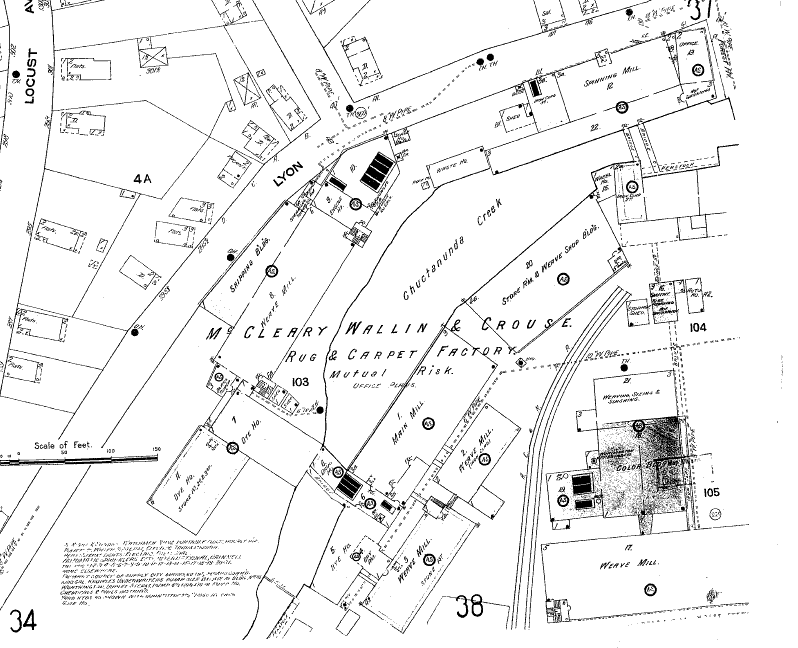
Sanborn Insurance Company map, 1911.
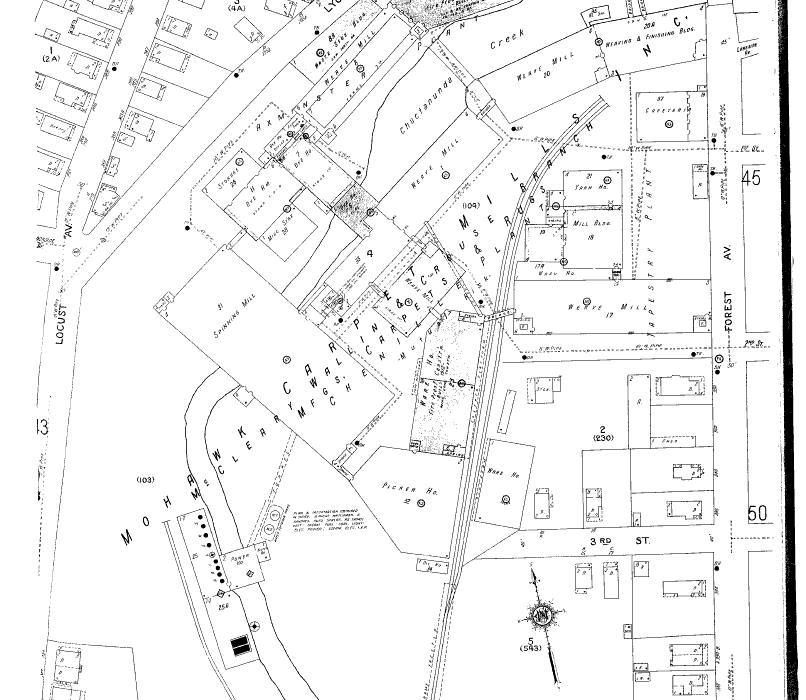
Sanborn Insurance Company map, 1926. The power
plant, warehouse and weave mill survive today.
By
mid-century, the Mohasco name was introduced following Mohawk's merger with
downstate Alexander
Smith. It is that name that Amsterdammers remember these mills by.
However much of an imprint Mohasco left on the collective memory of the city,
the company itself didn't last very long here. The carpet makers were
courted by Southern states
offering new factory buildings and financial incentives to relocate (first
Sanford in 1955, and Mohawk by the end of the 1960s), and Amsterdam
and Yonkers found themselves with vast amounts of available commercial real estate.
Not of consolation to Amsterdam, the Mohawk
name still lives on
following numerous mergers, moves, and reorganizations..
Like the Sanford mill downtown, which was occupied by toy-maker Coleco in the
early 1980s, the McCleary & Co. mill was taken over by the Esquire Novelty
in the latter half of the 20th-century. Esquire's specialty was toy
guns. The company moved to Amsterdam in 1968, and left for (no
surprise here) China around
the end of 2000. Just two years earlier Esquire earned 20 million
dollars in sales and renovated the factory partly funded by a New York State
grant to help the firm stay competitive and stay local. But even such incentives
are no match for the savings a company can accumulate by paying some kid in
China ridiculously cheap wages to make ridiculously cheap toys for kids in the
United States.
I am sorry that I missed the Mohawk/McCleary & Co. mill site when I first set foot
in Amsterdam in 2006. It was largely intact though some
fires broke out in the early 1990s.
The mill is well-documented; numerous photographs appear on the internet, including
the Urban
Exploration Database. Although surely interesting, mill buildings
like these are generally emptied and devoid of any all all machinery that might indicate
what once was made here. The machines may have been broken down and sold for
scrap, or purchased at auction piecemeal by smaller manufacturers. I didn't get
inside the mill proper, but the mill's power plant however, was very interesting
and a lot of fun to photograph.
These photographs were taken March, 2011.
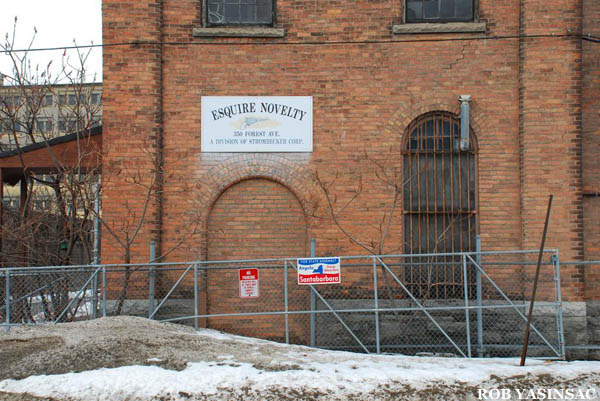
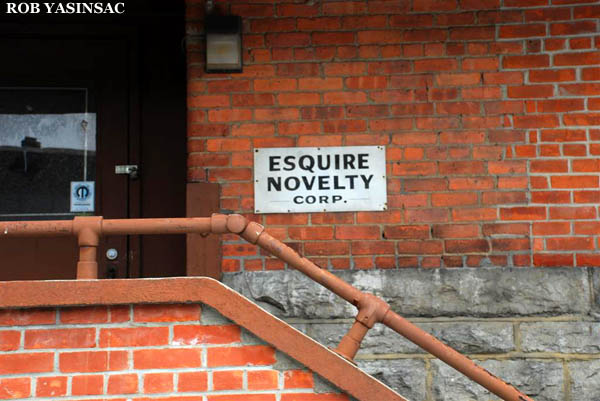
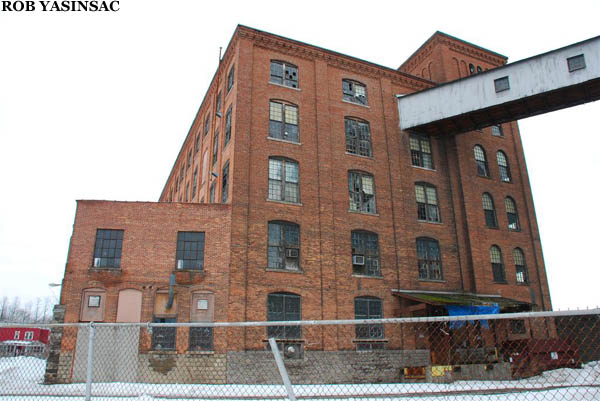
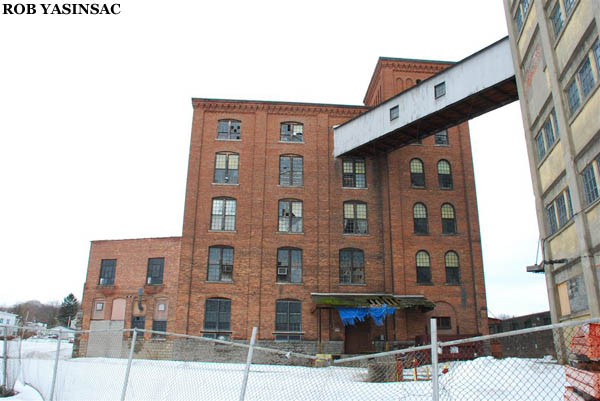
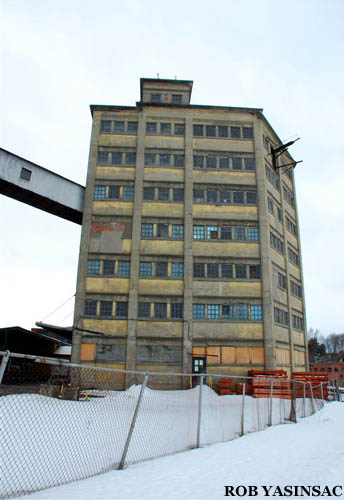
This page copyright © 2011 by Robert
J. Yasinsac.
Copying or reproducing text or photographs, in any format, without permission from Robert
J. Yasinsac is
prohibited.